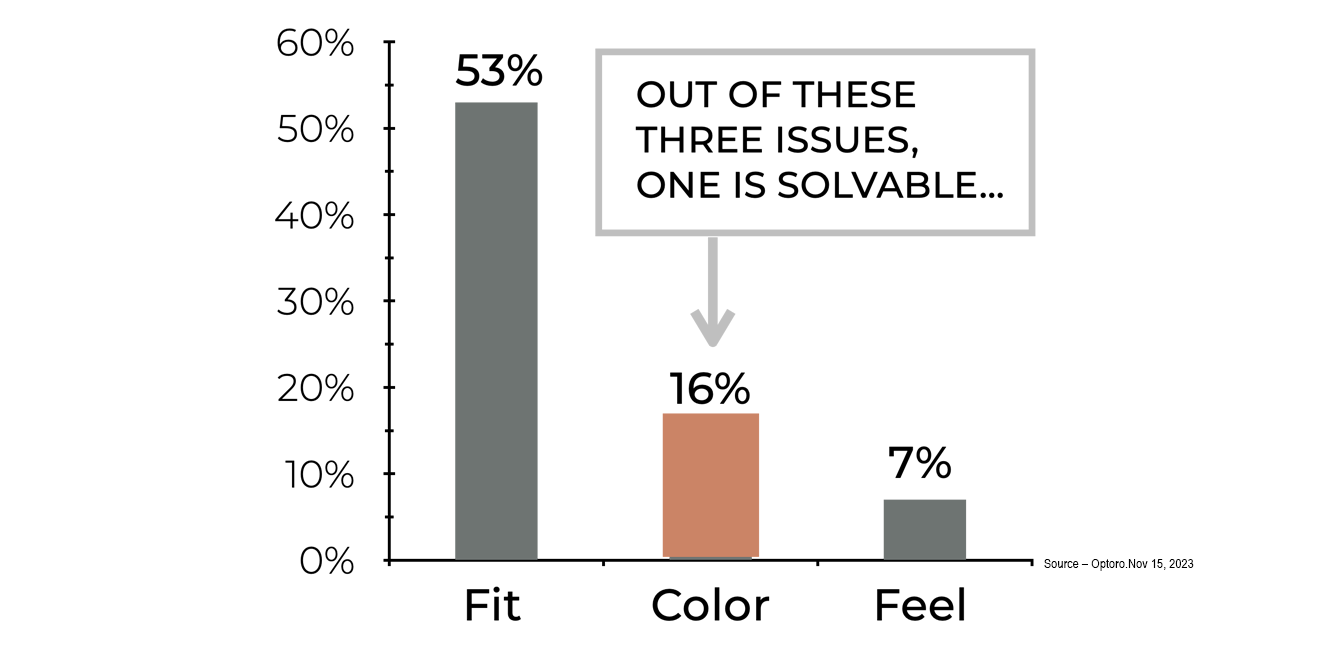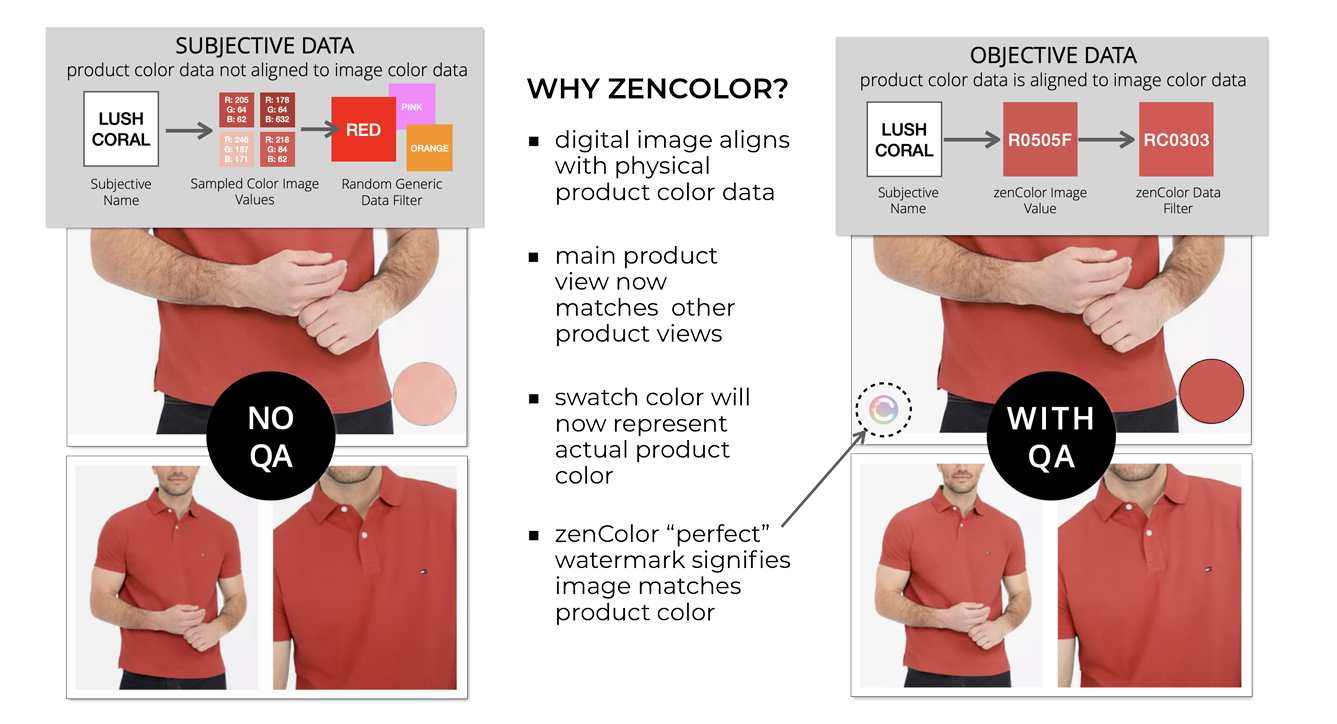

AS ONLINE SALES GROW
SO DO RETURNS
Of the $1.3 trillion dollars in online sales that registered in the USA in 2022. approximately 16.5 percent ended up as returns. This is a staggering number. Processing a return can cost retailers as much as 39% of the original price. Misrepresenting the color data between the product and the image that represents the product not only leads to returns, but it can easily prevent a consumer from purchasing a product or future products online.

EVERY RETAILER ON EARTH HAS THE
SAME COLOR DATA PROBLEM
Visual content is the lifeblood of e-commerce. As the more and more consumers migrate to online shopping platforms, the disconnect between the color data for physical products and the digital images that represent those products online has led to a staggering $40 billion annual loss for retailers in North America alone.
- PLM systems are not set up to assure that the physical product matches the digital image presented to a consumer, search engine, or AI.
- Customers that purchase products online often experience disappointment when they receive the physical item.

COLOR DATA ALIGNED
FOR CONSUMERS & AI
Inconsistent color data visualization makes it difficult for an online consumer to determine the correct color. The same problem applies to a machine. If an AI powered personal shopper cannot determine the color data, it cannot analyze the data or make hyper-personalized recommendations based on color preference.

DATA ALIGNMENT STARTS WITH
IMAGE INTELLIGENCE QA
Despite the transition to digital color in the late 1990s, there is little connectivity between the digital and non-digital systems that identify and align color data during the product development process. The product color that gets made is often different than the color data in the digital archive. This creates an issue for extending color data management to the product images and color swatches in the online store.
Image Intelligence QA integrates the zenColor universal data mapping language model throughout the product lifecycle, extending color data management from the physical product to the digital platform.
